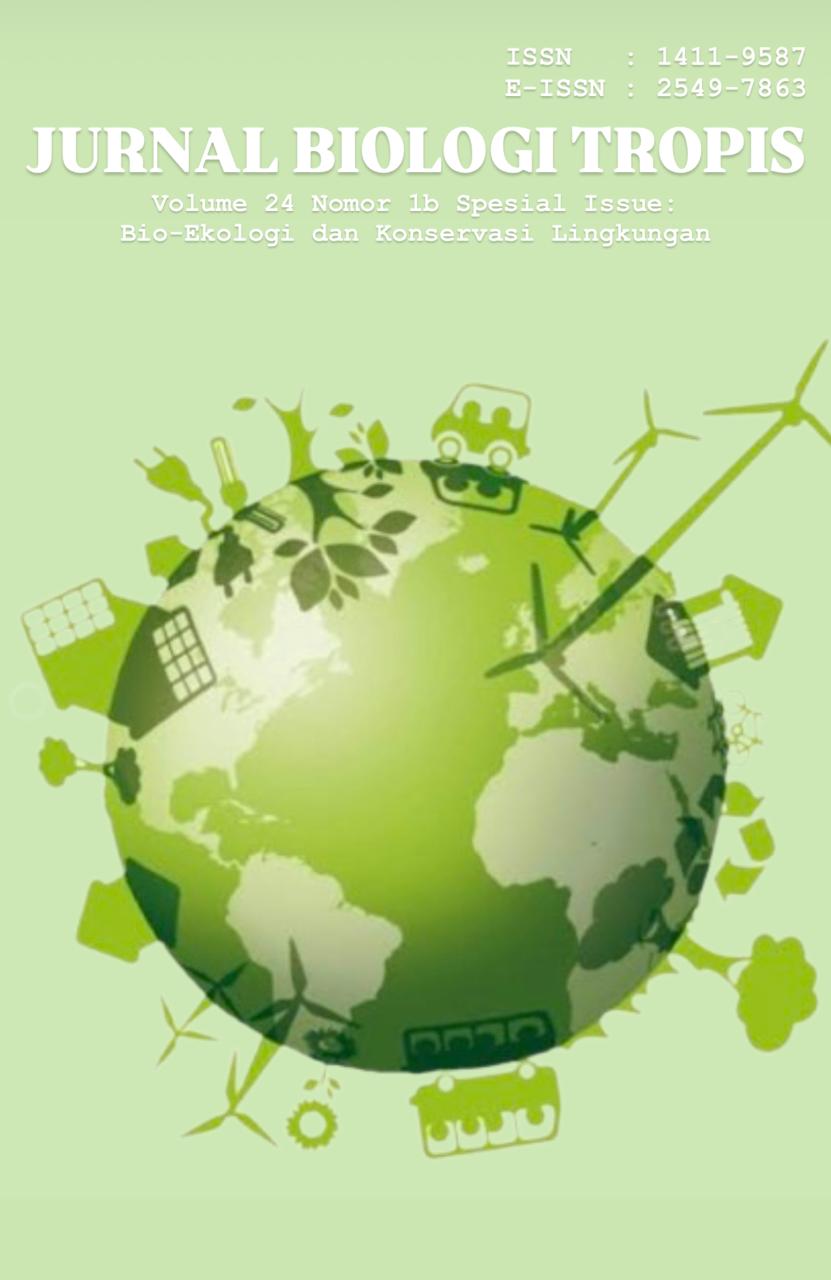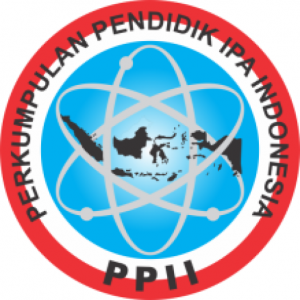Effectiveness of Various Botanical Insecticides for Controlling Liriomyza sp. Pests
Authors
Ahdiatsa Hairi Akram , A.A. K Sudarmawan , I Made SudanthaDOI:
10.29303/jbt.v24i2b.8161Published:
2025-02-01Issue:
Vol. 24 No. 2b (2024): Special IssueKeywords:
agroecosystems; botanical insecticides; Liriomyza sp.; pest control; sustainable agricultureArticles
Downloads
How to Cite
Downloads
Metrics
Abstract
The use of botanical insecticides presents a promising alternative for controlling Liriomyza sp. pests, which often damage horticultural crops. This study examines the effectiveness of various botanical insecticide materials, such as extracts from neem leaves, tobacco, and other plants containing bioactive compounds like alkaloids and terpenoids. Literature reviews indicate that botanical insecticides work through mechanisms such as feeding inhibition, growth disruption, and increased pest mortality, demonstrating effectiveness comparable to synthetic insecticides. Factors such as concentration, application methods, and environmental conditions influence the efficacy of botanical insecticides. In addition to being environmentally friendly, botanical insecticides offer advantages such as rapid biodegradability and safety for non-target organisms. However, challenges such as low compound stability and the need for more frequent applications remain significant limitations. This study highlights the importance of farmer training to enhance the adoption of this eco-friendly technology in sustainable agricultural practices.
References
Abdurrahman, S. G., Ikawati, S., Choliq, F. A., & Mustofa, O. (2024). Bioaktivitas Ekstrak Limbah Tembakau Sebagai Pestisida Nabati Terhadap Hama Plutella Xylostella Pada Tanaman Kubis. Jurnal Hama Dan Penyakit Tumbuhan, 12(2), 91–102. DOI:10.21776/ub.jurnalhpt.2024.012.2.3
Amoabeng, B. W., Stevenson, P. C., Mochiah, B. M., Asare, K. P., & Gurr, G. M. (2020). Scope for non-crop plants to promote conservation biological control of crop pests and serve as sources of botanical insecticides. Scientific Reports, 10(1), 1–15. DOI:10.1038/s41598-020-63709-x
Arfan, Ratnawati, Noer, H., Indriani, L., Asli, & Juhana. (2019). Efektivitas Ekstrak Daun Nimba (Azadirachta Indica A. Juss) Dalam Mengatasi Serangan Liriomyza Spp Pada Tanaman Bawang Merah Lembah Palu. Jurnal Agrotech, 9(2), 66–71. DOI:10.31970/agrotech.v9i2.36
Ayeni, O., Esther, O., & Komolafe, O. (2024). Environmental impact of modern agricultural practices : Strategies for reducing carbon footprint and promoting conservation. 6(9), 3082–3095. DOI:10.51594/ijmer.v6i9.1581
Hadiyanti, N., Probojati, R. T., & Saputra, R. E. (2021). Aplikasi Pestisida Nabati untuk Pengendalian Hama pada Tanaman Bawang Merah dalam Sistem Pertanian Organik. JATIMAS : Jurnal Pertanian Dan Pengabdian Masyarakat, 1(2), 89. DOI:10.30737/jatimas.v1i2.2096
Hamza, M. A., Ishtiaq, M., Mehmood, M. A., Majid, M. A., Gohar, M., Radicetti, E., Mancinelli, R., Iqbal, N., & Civolani, S. (2023). Management of Vegetable Leaf Miner, Liriomyza Spp., (Diptera: Agromyzidae) in Vegetable Crops. Horticulturae, 9(2), 1–12. DOI:10.3390/horticulturae9020255
Haryanto, H., M. Sarjan &, & Muthahanas, I. (2018). Pemanfaatan Insektisida Nabati Dan Hayati Untuk Mengendalikan Hama Tanaman Tomat Yang Dibudidayakan Secara Organik. Jurnal Crop Agro, 2, 7250–7257. https://cropagro.unram.ac.id/index.php/caj/article/view/50%0Ahttps://www.cambridge.org/core/product/identifier/CBO9781107415324A009/type/book_part%0Ahttp://www.ncbi.nlm.nih.gov/pubmed/25246403%0Ahttp://www.pubmedcentral.nih.gov/articlerender.fcgi?artid=PM
Jannah, N. A. M., & Yuliani, Y. (2021). Keefektifan Ekstrak Daun Pluchea indica dan Chromolaena odorata sebagai Bioinsektisida Terhadap Mortalitas Larva Plutella xylostella. LenteraBio : Berkala Ilmiah Biologi, 10(1), 33–39. DOI:10.26740/lenterabio.v10n1.p33-39
Joeniarti, E., Masfufatun, Indahsari, N. K., & Noerhartati, E. (2020). Effects of curcumin on stability and efficacy of neem leaves extract as botanical insecticides. Agrivita, 42(2), 331–340. DOI:10.17503/agrivita.v42i2.2651
Khabita, N., Sulistiyawati, I., & Nurasih, A. D. (2022). Uji Sinergitas Rendaman Tembakau (Nicotiana tabacum L.) dengan Jamur Trichoderma spp. Secara In Vitro dan Potensinya Sebagai Gabungan Biopestisida Alami. Jurnal Ilmiah Universitas Batanghari Jambi, 22(2), 1045-1053. DOI:10.33087/jiubj.v22i2.2263
Kumar, A. D. D., & Donthi, N. R. (2024). Adverse Effects of Pesticides: Regulatory Failures, Impacts on Public Health and Environmental Wellbeing (S. Kumar (ed.); p. Ch. 8). IntechOpen. DOI:10.5772/intechopen.1006357
Mkindi, A. G., Mpumi, N., Tembo, Y., Stevenson, P. C., Ndakidemi, P. A., Mtei, K., Machunda, R. L., & Belmain, S. R. (2017). Invasive Weeds With Pesticidal Properties as Potential New Crops. Industrial Crops and Products, 110, 113–122. DOI:10.1016/j.indcrop.2017.06.002
Nugraha, S. P., & Agustiningsih, R. W. (2015). Pelatihan Pemanfaatan Limbah Tembakau Sebagai Bahan Pembuatan Biopestisida Nabati. Inovasi Dan Kewirausahaan, 4(1), 63–67. https://journal.uii.ac.id/ajie/article/view/7897
Olena, F., & Lyudmila, S. (2024). Negative Effect Of Pesticides On The Biosphere As A Threat. Visegrad Journal on Human Rights, 3, 41–47. DOI:10.61345/1339-7915.2024.3.6
Pujiati, E. S., & Sucahyo, A. (2021). Pengaruh Fito-Pestisida Terhadap Hama Penggerek Daun Serpentin (Liriomyza Sp.) Pada Budidaya Tanaman Krisanthemum (Chrysanthemum morifolium Ramat). Jurnal Ilmu-Ilmu Pertanian, 27(2), 10. DOI:10.55259/jiip.v27i2.548
Rahardjo, I. B., Marwoto, B., & Budiarto, K. (2020). Efficacy of selected plant extracts to control leaf miner (Lyriomyza spp.) in chrysanthemum. Agrivita, 42(1), 37–44. DOI:10.17503/agrivita.v42i1.2219
Rahmadi, R., Priyadi, P., & Rochman, F. (2022). Efektivitas Ekstrak Daun Sirsak (Annona muricata L.) Sebagai Insektisida Organik Dalam Mengendalikan Hama Walang Sangit (Leptocorisa acuta) Pada Padi Sawah. Agricola, 12(2), 82–90. DOI:10.35724/ag.v12i2.4558
Rohmah, W., Hoesain, M., & Pradana, A. P. (2022). Kelimpahan dan Keanekaragaman Predator Pada Pertanaman Padi dengan Aplikasi Kombinasi Insektisida Nabati dan Bakteri Endofit. Jurnal Ilmiah Inovasi, 22(1), 90–102. DOI:10.25047/jii.v22i1.2973
Saenong, M. (2017). Tumbuhan Indonesia Potensial Sebagai Insektisida Nabati Untuk Mengendalikan Hama Kumbang Bubuk Jagung (Sitophilus Spp.). Jurnal Penelitian Dan Pengembangan Pertanian, 35(3), 131. DOI:10.21082/jp3.v35n3.2016.p131-142
Sidauruk, L., Manalu, C. J., & Sinukaban, D. E. (2020). Efektifitas Pestisida Nabati Dengan Berbagai Konsentrasi Pada Pengendalian Serangan Hama Dan Produksi Tanaman Jagung Manis (Zea mays saccharata Sturt). Jurnal Rhizobia, 2(1), 24–32. DOI:10.36985/rhizobia.v9i1.223
Sutriadi, M. T., Harsanti, E. S., Wahyuni, S., & Anicetus Wihardjaka. (2019). Botanical pesticide: the prospect of environmentally friendly pest control. Jurnal Sumberdaya Lahan, 13(2), 89–101. DOI:10.31080/ASAG.2023.07.1236.
Sutriadi, M. T., Harsanti, E. S., Wahyuni, S., & Wihardjaka, A. (2020). Pestisida Nabati: Prospek Pengendali Hama Ramah Lingkungan. Jurnal Sumberdaya Lahan, 13(2), 89. DOI:10.21082/jsdl.v13n2.2019.89-101
Yuliani, Y., & Utami, A. (2022). Uji Efektivitas Daun Sirsak Annona Muricata) Dan Daun Cengkeh (Sizygium Aromatikum L.) Terhadap Pengendalian Ulat Grayak (Spodoptera Litura). Pro-Stek, 4(1), 32. DOI:10.35194/prs.v4i1.2339
Zhang, P., Zhang, M., Mellich, T. A., Pearson, B. J., Chen, J., & Zhang, Z. (2022). Variation in Rotenone and Deguelin Contents among Strains across Four Tephrosia Species and Their Activities against Aphids and Whiteflies. Toxins, 14(5). DOI:10.3390/toxins14050339
License
Copyright (c) 2025 Ahdiatsa Hairi Akram, A.A. K Sudarmawan, I Made Sudantha

This work is licensed under a Creative Commons Attribution 4.0 International License.

Jurnal Biologi Tropis is licensed under a Creative Commons Attribution 4.0 International License.
The copyright of the received article shall be assigned to the author as the owner of the paper. The intended copyright includes the right to publish the article in various forms (including reprints). The journal maintains the publishing rights to the published articles.
Authors are permitted to disseminate published articles by sharing the link/DOI of the article at the journal. Authors are allowed to use their articles for any legal purposes deemed necessary without written permission from the journal with an acknowledgment of initial publication to this journal.


























